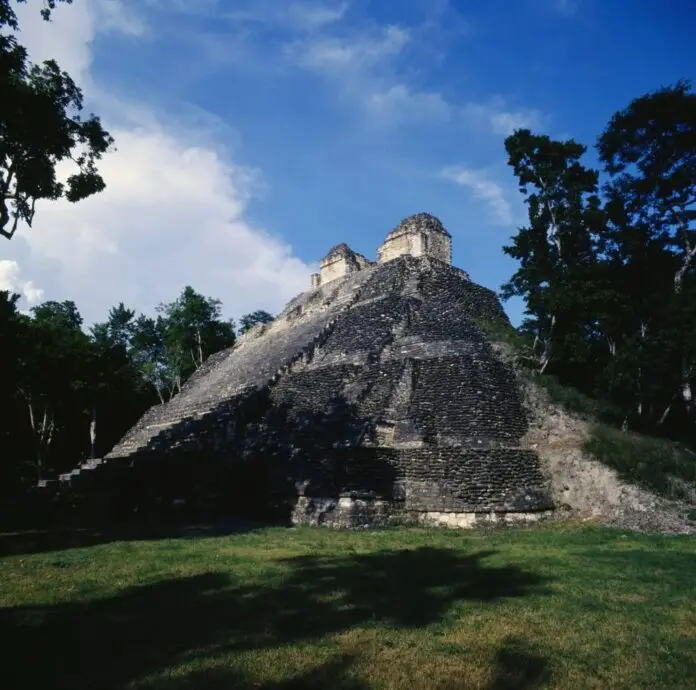The discovery of ancient stucco reliefs in the Mayan city of Dzibanche, Mexico, has provided valuable insights into one of the region’s powerful dynasties. The Kaanu’l dynasty, which ruled between 250 and 650 C.E., is believed to have originated from this area, comprising parts of modern-day Mexico, Belize, and Guatemala. According to Mayan mythology, the Kaanu’l saw themselves as earthly representatives of the gods and used the snake as their symbol.
Excavation teams at Dzibanche have uncovered three stucco reliefs affixed to platforms near a ball court. These ancient artworks date back between 500 and 600 C.E. The presence of intertwined snakes in the imagery allowed researchers to identify the Kaanu’l dynasty as the force behind them. Each relief depicts unique scenes, including:
1. A pair of guardians standing beside a pedestal that would have held a sculpture, possibly representing a specific Kaanu’l ruler.
2. Ancestors inhabiting the night sky, surrounded by stars, snakes, and other classic Mayan icons.
3. A mythological assemblage of animals connected to constellations in the sky.
The discovery is significant, according to lead archaeologist Sandra Balanzario, who stated that finding such decorated façades on a ball court was unexpected. The researchers have been working diligently to find and preserve Mayan reliefs, which are made from sascab (lime gravel mixture) and vulnerable to weathering. To achieve this goal, they are creating accurate photogrammetric models of the reliefs through photography.
The research has received funding from Mexico’s National Institute of Anthropology and History and the Mayan Train project, launched by former president Andrés Manuel López Obrador to connect Mayan sites across the country with a 1,000-mile railway network. This backing has enabled the restoration of several ancient structures in Dzibanche, including the Temple of the Owl and the Temple of the Cormorants, as well as explorations of the surrounding area.
In summary, the discovery of stucco reliefs at Dzibanche sheds light on the Kaanu’l dynasty and provides insights into Mayan mythology. The preservation efforts aim to protect these ancient artworks for future generations.
Source: ArtNet






